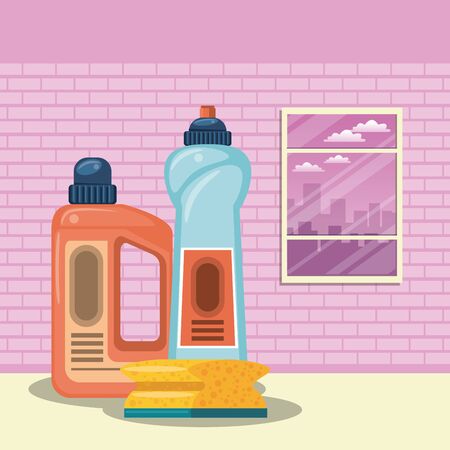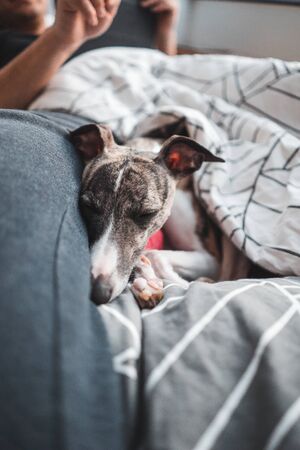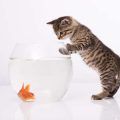Recognizing Dehydration and Heat Exhaustion in Pets
Spotting the early warning signs of dehydration and heat exhaustion in your pets can make a life-saving difference, especially during hot summer months or after vigorous activity. Dogs and cats cant sweat like humans, so they rely on panting and limited heat dissipation. Look for practical signs such as excessive panting, drooling, or lethargy—your dog may suddenly slow down on a walk, refuse to play fetch, or seek shade obsessively at the park. Cats often become unusually quiet, hide more than usual, or show rapid breathing. At home, you might notice your pets gums are dry or tacky instead of moist and pink, and their skin loses elasticity—if you gently lift the skin at the back of their neck and it doesnt snap back quickly, dehydration is likely. In severe cases, pets may vomit, collapse, or appear confused. Recognizing these behaviors both indoors and outdoors is key to preventing further complications.
Common Causes and Risk Factors
Understanding what situations and pet behaviors put your furry friends at greater risk for dehydration and heat exhaustion is essential, especially during the hot American summer months. Everyday activities and household scenarios can quickly turn dangerous if you’re not careful. Below is a breakdown of common causes and risk factors that American pet owners should watch out for:
Outdoor Summer Activities
Pets love to join in on family barbecues, hikes, or trips to the dog park, but these fun outings can expose them to high temperatures and limited access to fresh water. Even a short walk on hot pavement can increase a pet’s body temperature rapidly, leading to overheating. If you live in regions like Texas, Florida, or California where summer heatwaves are common, extra caution is needed.
Household Scenarios That Increase Risk
| Scenario | Risk Factor | Example Behavior |
|---|---|---|
| No Air Conditioning | Poor ventilation can trap heat indoors, especially in apartments or older homes without AC. | Panting excessively even when resting indoors. |
| Lack of Water Bowls | If water bowls are empty or knocked over, pets may go hours without drinking. | Seeking water from unusual places like toilets or sinks. |
| Crated or Confined Spaces | Poor airflow and limited space can cause heat to build up quickly. | Whining or scratching at crate doors during hot weather. |
| Traveling in Cars | Leaving pets in parked cars, even with windows cracked, can be fatal within minutes. | Lethargy or drooling after car rides. |
Pet-Specific Behaviors & Conditions
- Brachycephalic breeds (like Bulldogs and Pugs) are more prone to overheating due to their short snouts.
- Seniors and puppies have less ability to regulate body temperature and need closer supervision during warm days.
- Active dogs that chase balls or run nonstop might ignore signs of exhaustion until it’s too late.
Local Insights: American Summer Realities
Cultural habits such as attending outdoor festivals, backyard pool parties, or even Fourth of July fireworks can distract owners from monitoring their pets’ hydration. In urban areas like New York City, hot asphalt and concrete amplify heat risk during daily walks. Recognizing these local scenarios helps prevent emergencies before they start.
Action Steps for Pet Owners
- Always carry a portable water bottle and collapsible bowl when outdoors with your pet.
- Monitor for signs of dehydration such as sunken eyes, dry gums, or loss of skin elasticity.
- Create shaded rest spots in your yard or during outdoor events so your pets have somewhere cool to retreat.
By staying alert to these common causes and risk factors—both outside and inside the home—you’ll protect your furry companions from dehydration and heat exhaustion all summer long.

3. Immediate Steps to Take If Your Pet is Affected
If your pet starts showing signs of dehydration or heat exhaustion, acting fast can save their life. Here’s an action-oriented guide tailored for American pet owners, focusing on safe cooling and first aid steps.
Move Your Pet to a Cooler Area
First, get your pet out of direct sunlight. Bring them indoors or to a shaded spot, like under a tree or porch. If you’re at home, use air conditioning or a fan to help lower their body temperature quickly.
Offer Small Amounts of Water
Let your pet drink cool (not ice-cold) water in small sips. Don’t force-feed water or let them gulp too much at once, as it could cause vomiting. For dogs and cats, offer water in a bowl; for smaller pets, gently wet their lips with a damp cloth if they refuse to drink.
Use Safe Cooling Methods
- Wet Towels: Place cool, damp towels on your pet’s paws, belly, and armpits.
- Mist with Water: Lightly mist your pet’s fur with cool water using a spray bottle—avoid ice-cold water.
- Avoid Full Immersion: Never dunk your pet in cold water or use ice packs directly on their skin, as this can cause shock.
Monitor Vital Signs
Watch for heavy panting, drooling, lethargy, unsteady walking, or vomiting. Check their gums—they should be moist and pink, not dry or pale. If symptoms worsen or don’t improve within minutes, it’s time for professional help.
When to Call the Vet
If your pet collapses, has seizures, vomits repeatedly, or doesn’t respond to basic first aid within 10-15 minutes, call your veterinarian or the nearest emergency animal hospital right away. Be ready to describe what happened and the steps you’ve taken so far.
Remember: quick action and safe methods are key. Your calm response can make all the difference during a heat-related emergency with your furry friend.
4. Safe and Effective Ways to Rehydrate Your Pet
When your pet shows signs of dehydration or heat exhaustion, quick and safe rehydration is crucial. Here are practical, vet-approved methods you can use at home to help your dog or cat recover. These techniques are designed to be both effective and gentle, ensuring your pet gets back on track without unnecessary stress.
Offer Fresh, Cool Water Frequently
The first step is always to provide fresh, cool water in a clean bowl. Encourage your pet to drink small amounts frequently rather than gulping a large volume at once, which may upset their stomach.
Ice Cubes: A Simple Cooling Trick
If your pet refuses water or is too weak, try offering ice cubes or crushed ice. Licking ice can be less intimidating for overheated pets and helps them hydrate slowly. This method works especially well for dogs who enjoy chewing or licking cold treats.
Electrolyte Solutions: When and How to Use Them
Electrolyte solutions replenish lost minerals and fluids more effectively than water alone. You can choose between store-bought products like Pedialyte (unflavored, no artificial sweeteners) or make a simple DIY mix at home if you’re in a pinch.
Store-Bought vs. DIY Electrolyte Solutions
| Option | Pros | Cons |
|---|---|---|
| Store-Bought (e.g., Pedialyte) | Ready to use, balanced formula, convenient | Contains additives/flavors; check labels for xylitol (toxic to pets) |
| DIY Mix (1 qt water + 1 tbsp sugar + 1 tsp salt) | No additives, easy ingredients, immediate solution | Lacks precise mineral balance; short-term use only |
Note:
Avoid electrolyte sports drinks meant for humans—they often contain sugars and additives unsafe for animals. Always consult your vet before using any electrolyte solution if your pet has underlying health conditions.
Syringe Feeding for Reluctant Drinkers
If your pet isn’t drinking on their own but is still alert, you can slowly administer water or electrolyte solution with an oral syringe (no needle). Go slow—offer small amounts at a time to prevent choking.
Monitor Progress and Know When to Seek Help
If your pet vomits after drinking, remains lethargic, or cannot keep fluids down, stop home care and contact your veterinarian immediately. Severe dehydration or heatstroke always requires professional intervention.
By using these practical strategies, you’ll give your pet the best chance at a safe recovery from dehydration and heat exhaustion—all while staying calm and prepared at home.
5. When to Seek Veterinary Help
Knowing when to seek professional help for your pet can make all the difference in cases of dehydration and heat exhaustion. While some mild symptoms can be managed at home, certain red-flag signs require immediate veterinary attention to prevent serious health complications or even death.
Recognizing Red-Flag Symptoms
If you notice any of the following symptoms, it’s time to stop home care and contact your local veterinarian or emergency animal hospital right away:
- Persistent vomiting or diarrhea—especially if your pet can’t keep water down
- Lethargy or collapse—your pet is unusually weak, unresponsive, or unable to stand
- Gums that are very pale, dry, or tacky—this may signal advanced dehydration
- Rapid breathing or excessive panting—even in a cool environment
- Tremors, seizures, or confusion
- No urination for 12+ hours
- High body temperature (over 104°F)—especially if not coming down with cooling efforts
Why These Symptoms Matter
These signs indicate that your pet’s body is struggling to cope and may need IV fluids, medications, or other interventions only a vet can provide. Delaying treatment in these situations can result in organ damage or worse.
How to Find Local Emergency Resources
Don’t wait until an emergency happens to know where to go. Save the phone number and address of the nearest 24/7 animal hospital in your phone. In most U.S. cities, you can also call the ASPCA Animal Poison Control Center at (888) 426-4435 if you suspect your pet has ingested something toxic during heat stress.
Action Steps If You Need Immediate Help
- Call ahead: Let the clinic know you’re coming and describe your pet’s symptoms so they can prepare.
- Keep your pet cool: Use air conditioning in the car and offer small sips of water while en route—unless they’re vomiting.
- Bring info: Take note of what happened, how long symptoms have lasted, and any first aid steps you’ve already taken.
Your Quick Decision Checklist:
- If symptoms are mild: Monitor closely and continue at-home rehydration.
- If red-flag symptoms appear: Don’t hesitate—seek veterinary help immediately.
The bottom line: It’s always better to err on the side of caution. Prompt action can save your pet’s life when dehydration or heat exhaustion becomes severe.
6. Tips to Prevent Dehydration and Heat Exhaustion
Keeping your pets safe from dehydration and heat exhaustion starts with simple, proactive habits that fit right into daily American life. Here are some behavior-focused tips you can easily put into practice:
Plan Walks Around Hot Weather
Try walking your dog early in the morning or later in the evening when temperatures are cooler. Avoid taking pets out during peak midday heat, especially in summer. Not only does hot pavement burn paws, but intense sun exposure can quickly lead to overheating. If you have an energetic pup, consider indoor play sessions or short backyard fetch games during extreme heat advisories.
Keep Water Bowls Accessible Everywhere
Make sure fresh water is always available both indoors and outdoors. Place extra bowls in commonly used rooms—like the kitchen or living room—and refill them frequently. For outdoor pets or backyard playtime, use sturdy, spill-proof bowls in shaded spots so water stays cool longer. When heading out for hikes or road trips, pack a portable pet water bottle or collapsible bowl for easy access.
Use Cooling Mats and Shaded Rest Areas
Invest in cooling mats or damp towels for your pets to lie on during hot days—they’re widely available at major American pet stores. Set up shaded rest areas using umbrellas, pop-up tents, or even under patio furniture when relaxing outside. Encourage your pet to take breaks and retreat to these cool spots often.
Monitor Indoor Temperatures
If you’re away from home during the day, keep air conditioning running or fans circulating air in rooms where your pets spend time. Never leave animals inside cars—even with windows cracked—as temperatures rise dangerously fast. Smart home devices like temperature sensors can alert you if things get too warm for your furry friends.
Know Your Pet’s Limits
Some breeds—especially flat-faced dogs like Bulldogs or Persian cats—are more prone to overheating. Watch for early signs of distress like excessive panting, drooling, or lethargy. Adapt activities based on your pet’s breed, age, health condition, and energy level.
Stay Prepared During Summer Events
During barbecues, Fourth of July celebrations, or family gatherings, make sure pets have a quiet spot away from crowds and plenty of fresh water nearby. Remind guests not to feed pets salty snacks or alcohol, which can worsen dehydration.
By adopting these everyday strategies and staying mindful of your pet’s behavior, you’ll help prevent dehydration and heat exhaustion—keeping your furry companions happy and healthy all summer long.

